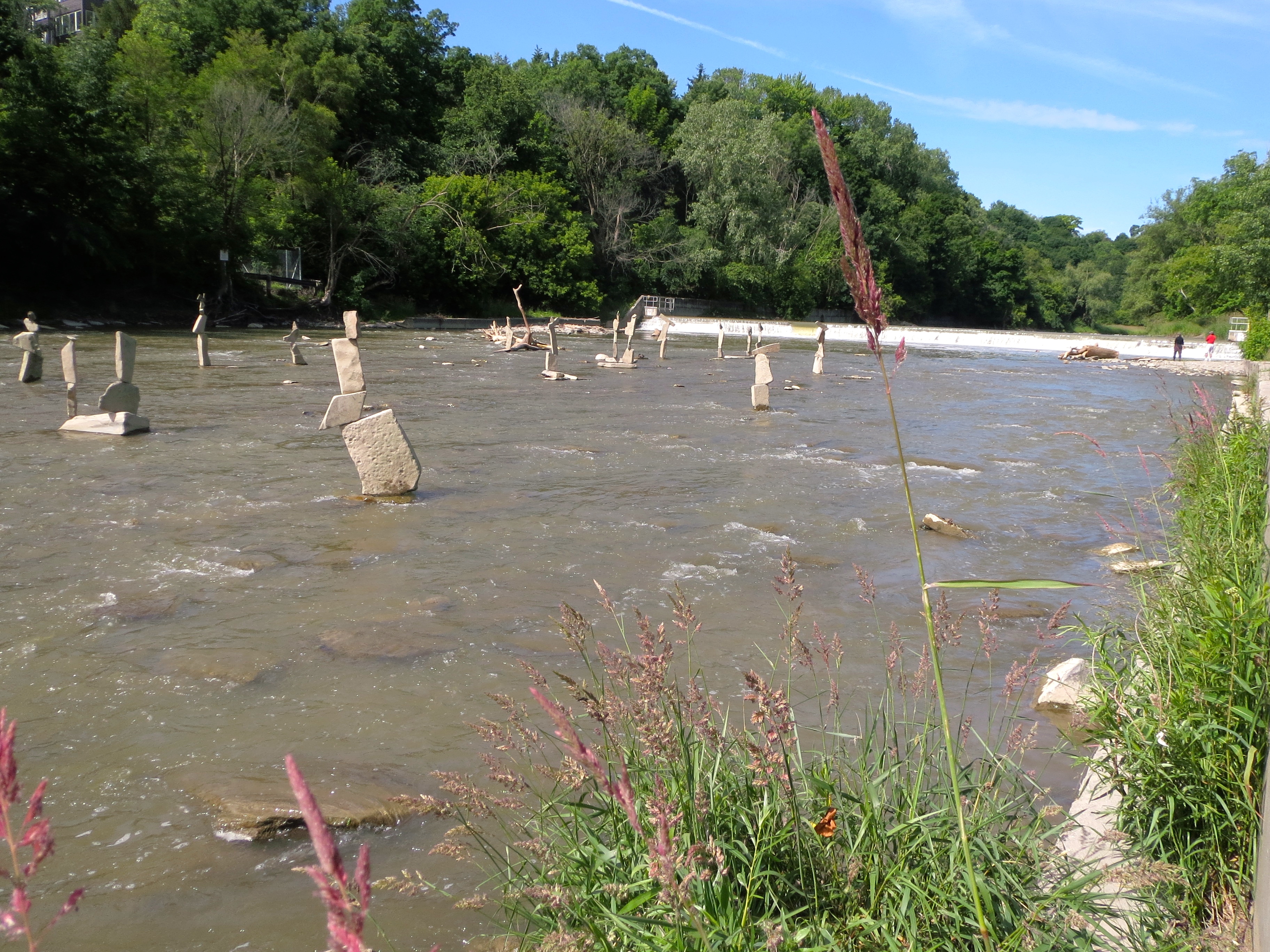”From time to time, the spirits seek us out because they are in need of human warmth for a little while. That is the time to listen very carefully to what they are saying because they are trying to tell us what we are really thinking.’’ Norman Hallendy, Inuksuit: Silent Messengers of the Arctic
I went for a walk along the Humber River. It’s just behind where I’m staying and wiggles its way southbound through Toronto until it reaches Lake Ontario. I came across carefully balanced inuksuit, in the middle of shallow waters, right after one of the many mini-waterfalls. After so many years overseas, I’d forgotten about the Humber and I’d forgotten about inuksuit. I was disappointed in myself so I did a little research.
The Inuit, the first people to live in parts of Arctic Canada, Alaska and Greenland, built inuksuit for practical things like communicating, navigating, hunting and marking places of respect. In the Inuit language, an inukshuk (the singular of inuksuit) means ”to act in the capacity of a human’’, according to the Canadian Encyclopedia online.
There are lots of different types and sizes of these balanced stone monuments and some of the largest ones were used to help people through Arctic journeys. To a traveller they could signify depth of snow or dangerous currents below thin ice. They could also mean that you’re following the right path, that this is the right direction.
Maybe the swirling muses are talking to me in an Elizabeth Gilbert Eat Pray Love type of way?Lately I’ve been thinking about how I’m approaching my study of belonging. Initially it was just a year-long experiment on myself and Australia to see if I could make myself feel I belong there. But that no longer seems enough. It no longer is enough. My writing and questioning are evolving. I want to know what gives other people a sense of belonging. I want to understand more.
I met Annie, a musician, on one of the flights here and we talked about belonging and creative inspiration and life. Annie lives in the US and tours extensively all over the world. Belonging isn’t necessarily a place for her. That deep sense of connecting and belonging comes when she is with other musicians and her artist friends.
Then I met Carole at Tartistry, a brilliant eclectic cafe in Toronto. Carole grew up speaking French in Sudbury with her parents. She lived in Calgary for a decade and also spent time in Switzerland. When she first came to Toronto she didn’t feel she belonged. It was only when she realised that she was aching for French culture, aching to hear and speak the language and missing that way of life, that she knew what to do. She surrounded herself with francophones and francophiles and that has given her a tremendous sense of community and belonging. That’s why she goes to Tartistry: so she can speak French with one of the owners.
Belonging is about more than just place. Yes I knew this intellectually, but perhaps I was restricting and tethering such a complex web of being by looking only at Australia and myself.So where do I go from here?
I’ll follow the meandering inuksuit of belonging. I may have to double back to avoid thin ice, I may get stuck in deep snow, but I’ll also find metaphorical places of respect and I know I’ll meet more fellow travellers on this philosophical journey.I’m on the right path.
I found out during my research that the Canadian government donated a huge inukshuk to the Queensland government in 1988. It’s apparently in Victoria Park. I’ll be looking for it when I return.



